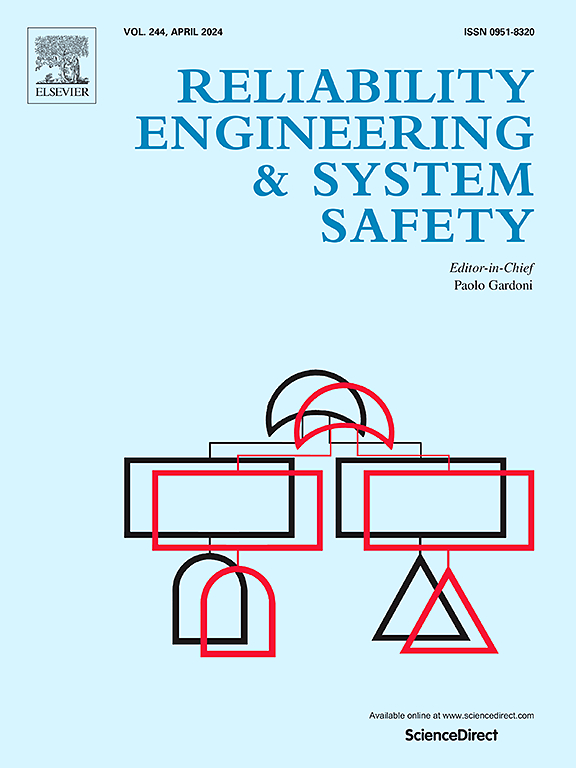A covariate-dependent Markov jump process with application to the propagation of rail defect severity
IF 9.4
1区 工程技术
Q1 ENGINEERING, INDUSTRIAL
引用次数: 0
Abstract
Rail defects pose a significant threat to railway safety and efficiency. Refined modeling of the propagation of rail defect severity has the potential of informing maintenance activities for circumvention of dangerous rail degradation. We consider discretely observed degradation trajectories for defects discovered on the Norwegian rail network with the impact from tonnage and line speed, as well as rail curvature, profile and grade. The propagation of defect severity is modeled using a continuous-time Markov chain regressed on covariates. We propose two estimation approaches: (1) direct maximization of the discrete data log-likelihood using analytical gradient information, and (2) Monte Carlo simulation of fully observed defect trajectories, which informs an Expectation–Maximization algorithm Both methodologies give rise to fast convergence of model estimates with similar estimates, indicating a favorable local optimum. The covariate parameters are statistically significant and align with their expected physical effects. Model checking is performed by cross-validation. Experiments with indicator variables demonstrate that the included exogenous information satisfactorily accounts for the structural variability between the different rail lines. We compute expected transition times for defects on selected rail lines and demonstrate how spatially varying track conditions affect defect propagation.
一个协变量相关的马尔可夫跳跃过程及其在钢轨缺陷严重程度传播中的应用
钢轨缺陷严重威胁着铁路的安全和效率。钢轨缺陷严重性传播的精细建模有可能为规避危险钢轨退化的维护活动提供信息。我们考虑在挪威铁路网上发现的缺陷的离散观察退化轨迹,其影响来自吨位和线路速度,以及轨道曲率,轮廓和等级。采用协变量回归的连续时间马尔可夫链对缺陷严重程度的传播进行建模。我们提出了两种估计方法:(1)使用分析梯度信息直接最大化离散数据对数似然;(2)对完全观察到的缺陷轨迹进行蒙特卡罗模拟,这为期望最大化算法提供了信息。这两种方法都能产生具有相似估计的模型估计的快速收敛,表明有利的局部最优。协变量参数具有统计显著性,并与预期的物理效应一致。通过交叉验证执行模型检查。用指标变量进行的实验表明,所包含的外生信息令人满意地解释了不同铁路线之间的结构变异性。我们计算了选定轨道上缺陷的预期过渡时间,并演示了空间变化的轨道条件如何影响缺陷的传播。
本文章由计算机程序翻译,如有差异,请以英文原文为准。
求助全文
约1分钟内获得全文
求助全文
来源期刊

Reliability Engineering & System Safety
管理科学-工程:工业
CiteScore
15.20
自引率
39.50%
发文量
621
审稿时长
67 days
期刊介绍:
Elsevier publishes Reliability Engineering & System Safety in association with the European Safety and Reliability Association and the Safety Engineering and Risk Analysis Division. The international journal is devoted to developing and applying methods to enhance the safety and reliability of complex technological systems, like nuclear power plants, chemical plants, hazardous waste facilities, space systems, offshore and maritime systems, transportation systems, constructed infrastructure, and manufacturing plants. The journal normally publishes only articles that involve the analysis of substantive problems related to the reliability of complex systems or present techniques and/or theoretical results that have a discernable relationship to the solution of such problems. An important aim is to balance academic material and practical applications.
 求助内容:
求助内容: 应助结果提醒方式:
应助结果提醒方式:


